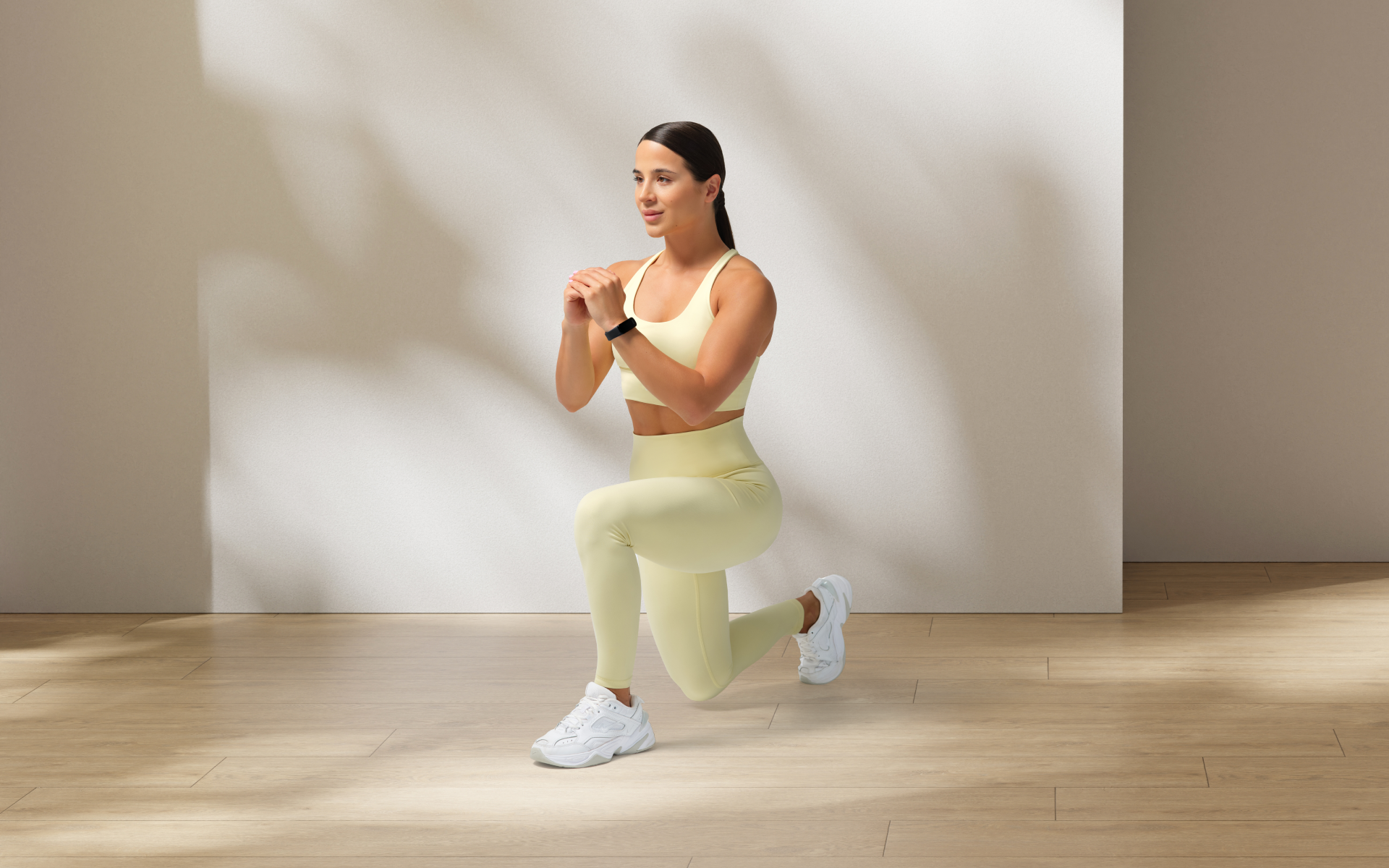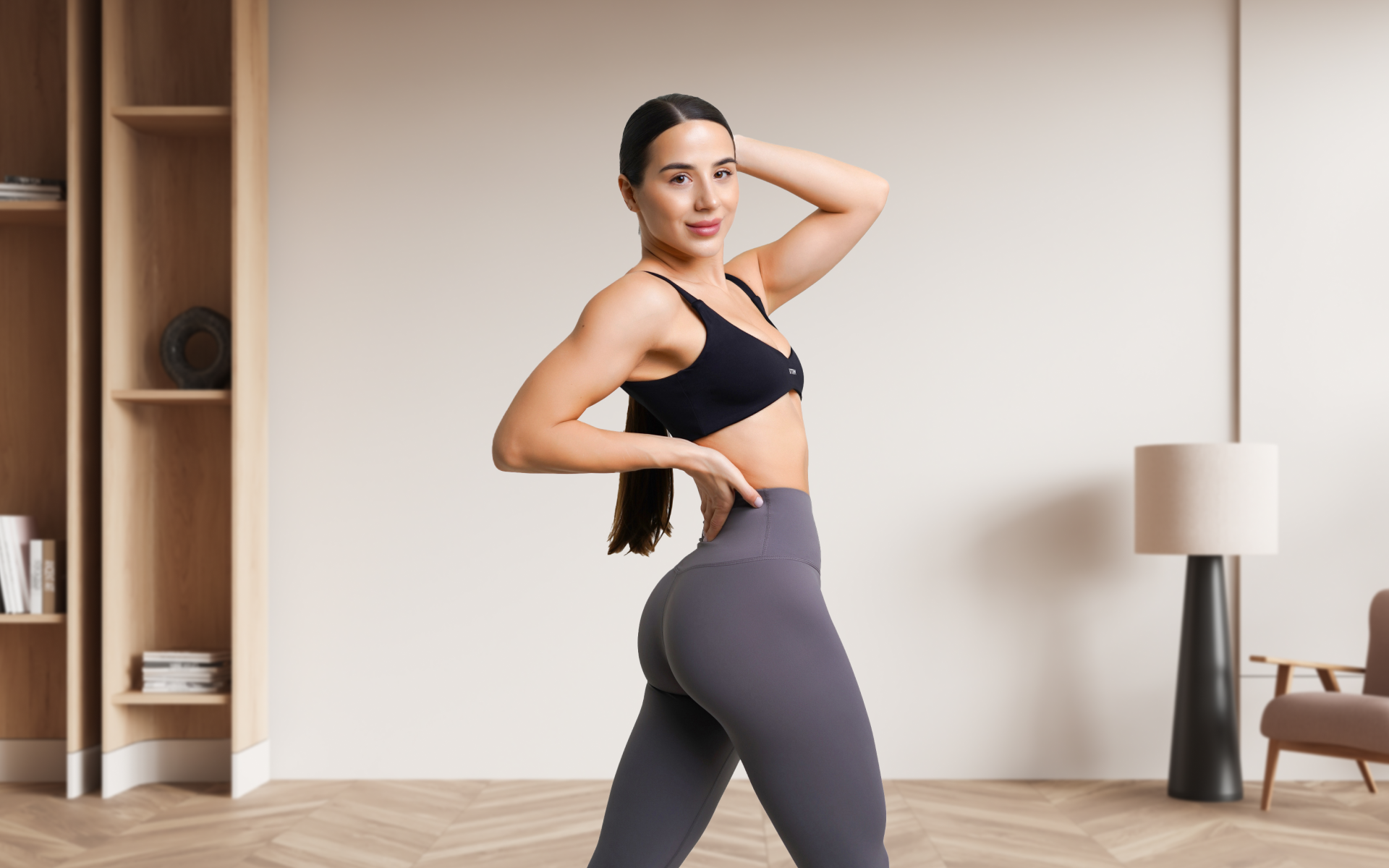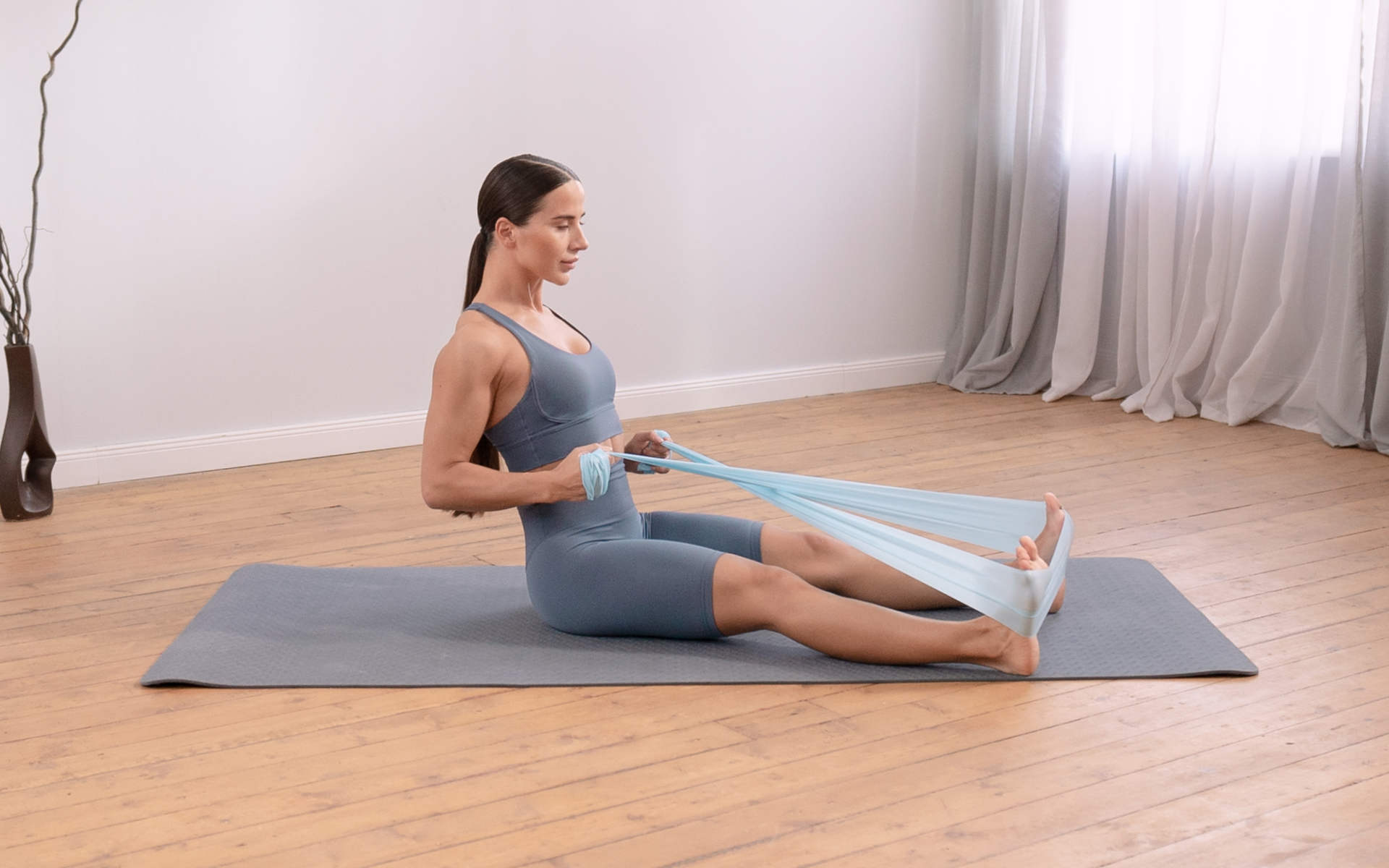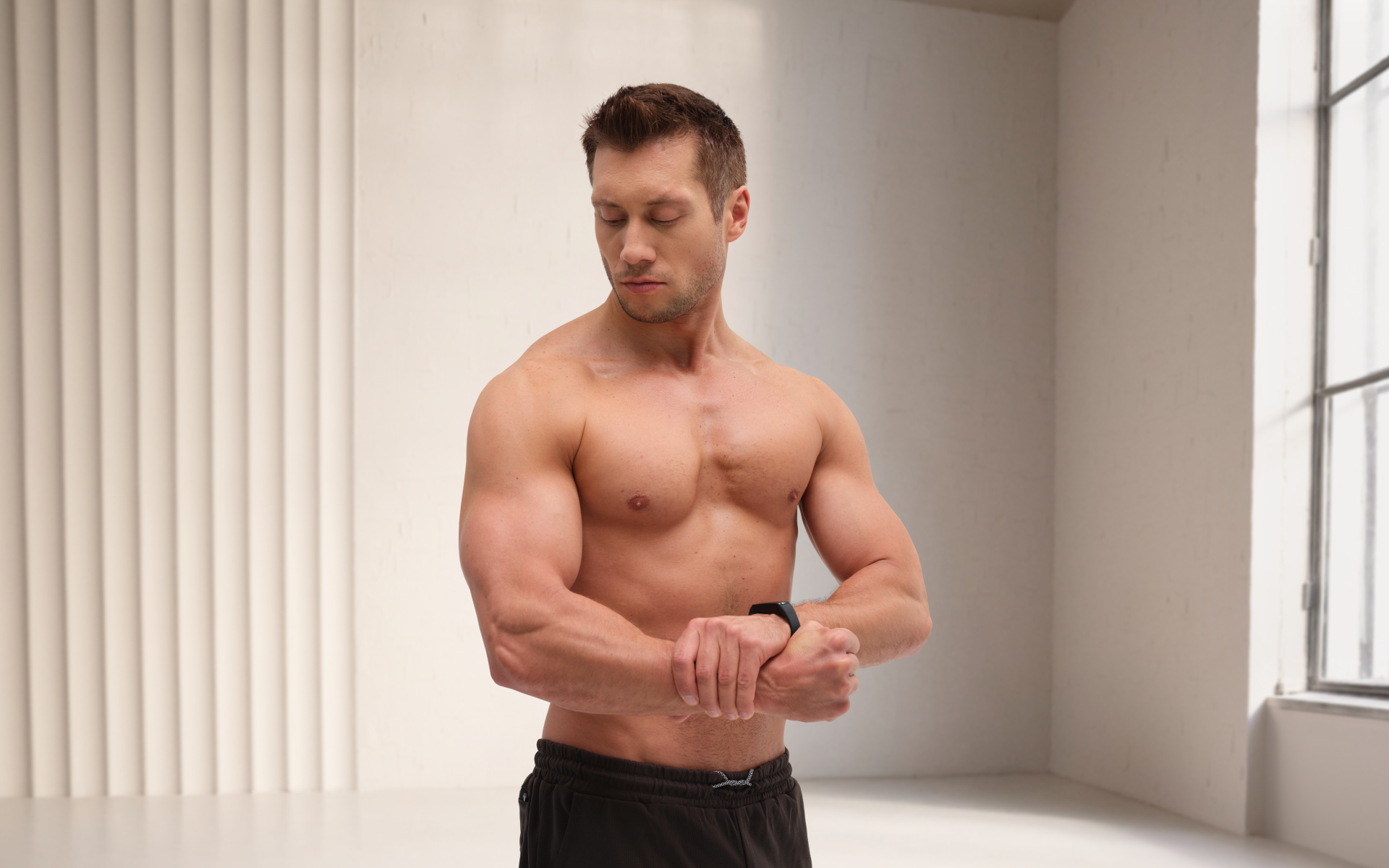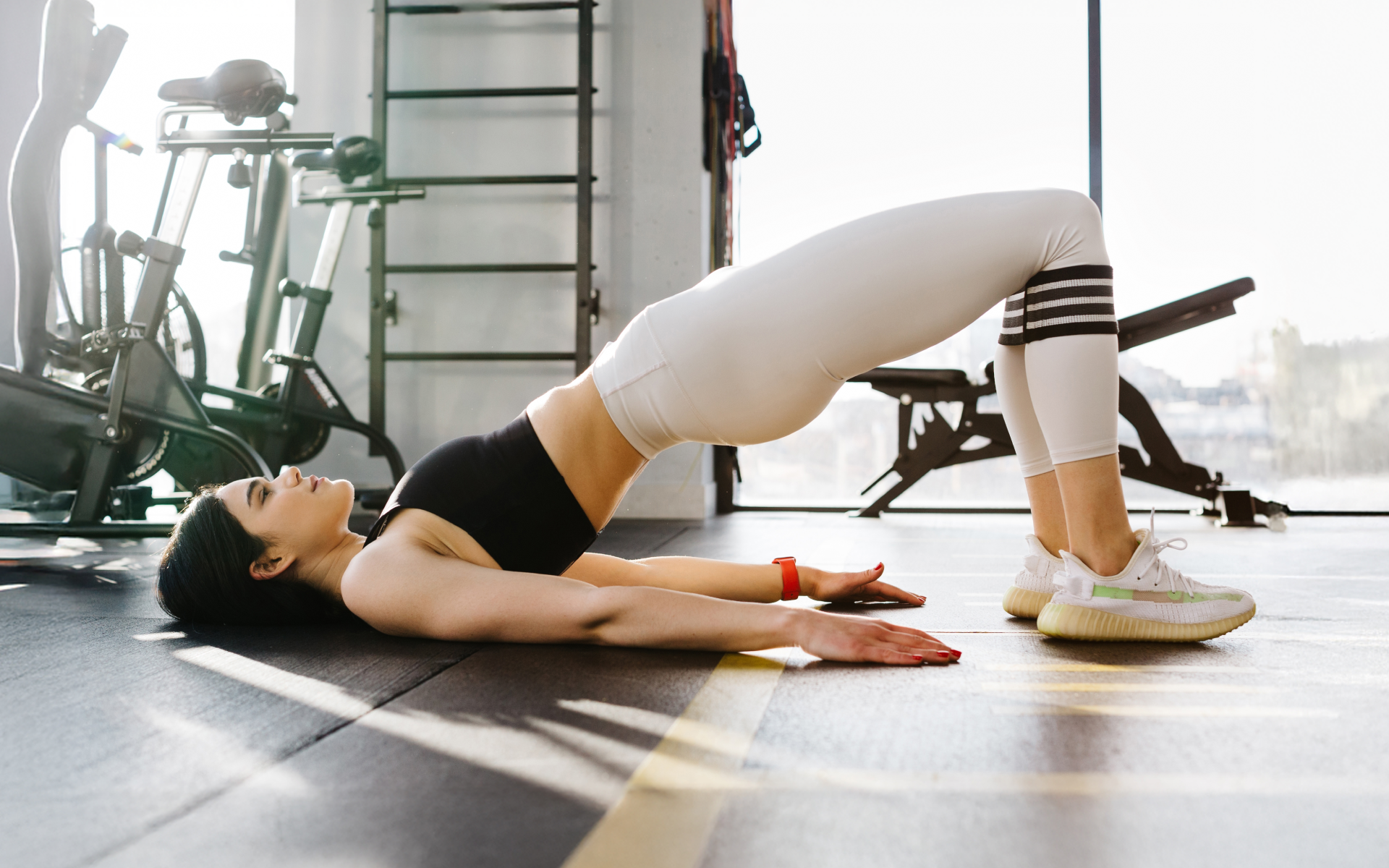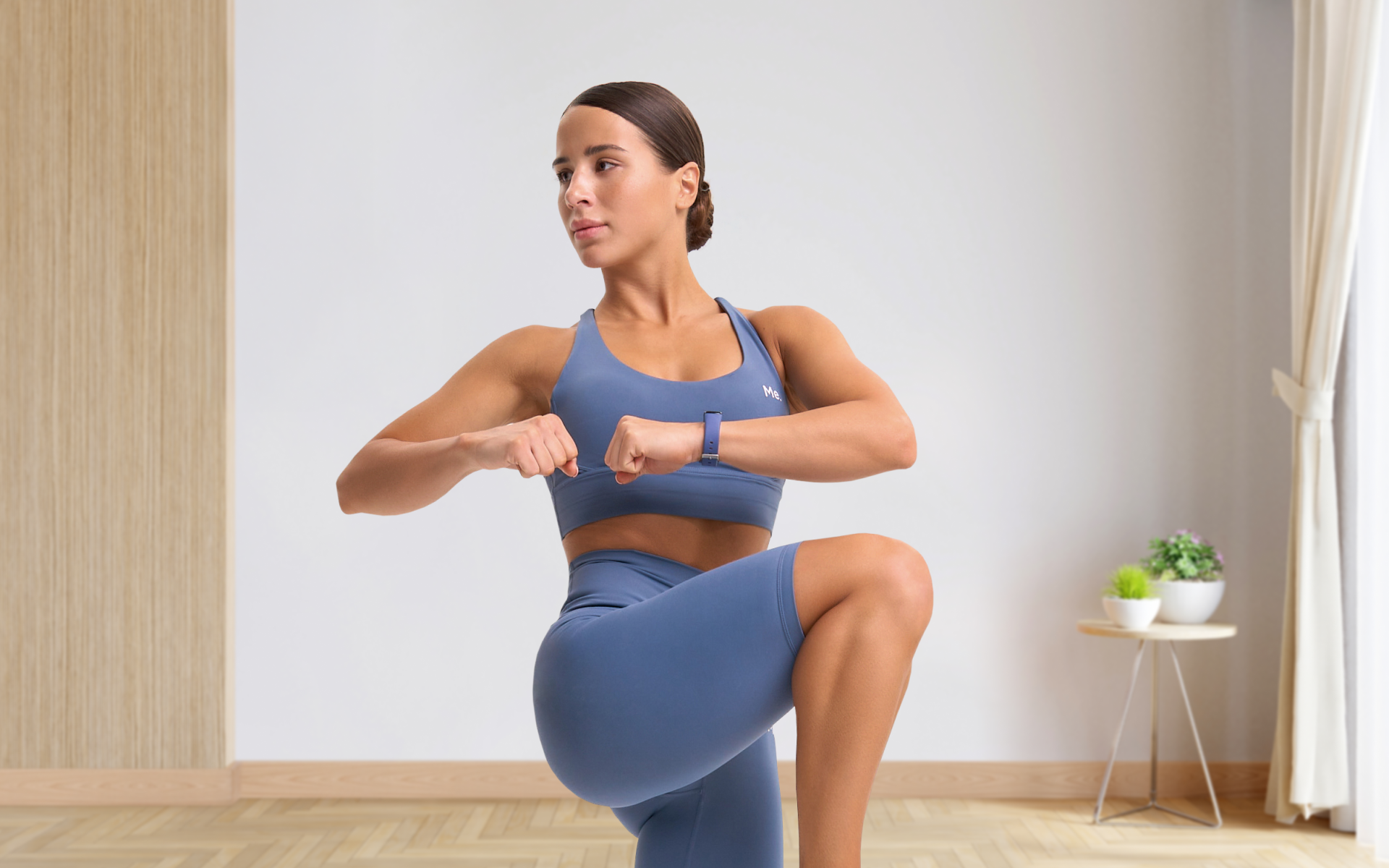Everybody in today’s fast-paced world is looking for a quick, efficient, and easily accessible workout. With costly gym memberships and expensive sports facilities gatekeeping fitness to a certain degree, newer and more convenient exercise formats are gaining popularity. Calisthenics is one of them gaining recognition due to its ability to build a solid foundation of strength using nothing but your body weight.
For beginners, the 30-day calisthenics challenge serves as an ideal entry point into this fitness discipline. It’s a structured program that progressively enhances your physical capabilities while emphasizing endurance, flexibility, and strength (1, 2). The best part is it can be done without any fancy gym equipment.
Our comprehensive guide will walk you through the concept of the 30-day calisthenics challenge, address common questions, and offer a detailed plan to help you achieve your fitness goals.
What Is a 30-Day Calisthenics Challenge?
The 30-day calisthenics challenge is a meticulously designed workout regimen that aims to help beginners build strength, endurance, and flexibility through body weight exercises. Contrary to traditional weightlifting or machine-based exercises, calisthenics utilizes the weight of your own body to create resistance. This style of workout is called resistance or strength training.
This method improves muscle strength and also betters coordination, balance, and body awareness (3, 4). The 30-day challenge typically includes a series of exercises such as push-ups, squats, lunges, planks, and more advanced movements such as burpees or plyometric exercises as you progress through the weeks.
Some of the features of the 30-day calisthenics challenge include:
- Adaptability: This challenge is highly adaptable, which makes it suitable for a wide range of fitness levels and goals. Whether you’re aiming to lose weight, get toned, or simply improve your fitness in general, the 30-day calisthenics challenge can be tailored to meet your personal needs.
- Versatility: The challenge’s versatility allows you to perform the exercises in various settings – from your living room to a public park – which makes it a perfect solution for those who lack access to a gym or prefer to work out at home. Such a structure helps eliminate boredom and keeps you committed to the plan.
- Focused Approach: For those who are just beginning their fitness journeys, the 30-day calisthenics challenge for beginners offers a structured yet flexible approach to building a solid fitness foundation. Each day, you engage in exercises that target different muscle groups, making sure there is balanced development of strength and endurance.
- Building A Habit: The challenge isn’t merely about performing exercises and is also about building discipline and consistency, which are important factors for long-term fitness success. As you progress through the challenge, the exercises increase in complexity and intensity, ensuring your body continues to adapt and grow stronger.
In addition, the challenge is designed to be inclusive, so it can accommodate both men and women. There is even a specialized 30-day calisthenics challenge for females that focuses on areas commonly targeted by women, such as the core, glutes, and legs. This makes the challenge accessible to everyone, regardless of gender or initial fitness level.
Is It OK to Do a Workout Every Day?
It is not recommended to perform any form of strength training, including calisthenics, especially for beginners. While some individuals with advanced training experience may be able to successfully strength train daily without injury using carefully crafted training splits and/or undulating daily or weekly volume, beginners should not attempt this.
Beginners should aim for 2-4 strength training workouts per week and keep their training split simple. This means either performing all full-body workouts or using a basic upper/lower alternating split.
Even with a well-designed strength training program, beginners will require a significant amount of muscle repair as their body adapts to the new stimulus. The physiologic restoration of muscles is a wonderful thing that results in improvements in strength and muscle mass, but it requires adequate rest. Therefore, taking rest days throughout the week is crucial for muscle adaptation to occur as a beginner.
The 30-day calisthenics challenge listed below incorporates rest days and low-intensity days into the program to allow for this type of adaptation and recovery to occur.
If you’ve mustered up the courage to crush your weight loss goal, let BetterMe take the sting out of this demanding process. Our app will help you restructure your habits, remold your life and crank up your fitness results!
30-Day Calisthenics Challenge Plan
To successfully complete a 30-day calisthenics challenge, it’s important to follow a well-organized plan that gradually increases in intensity. This plan should balance pushing your limits with ensuring adequate recovery, promoting steady progress while minimizing the risk of injury.
Week 1: Foundation Building
Day 1-2:
- Start with fundamental exercises that will create the groundwork for more advanced movements. Focus on proper form and technique to build a strong foundation. Use modifications for any exercise as necessary based on your fitness level.
- Exercises include push-ups (3 sets of 10-15 reps), body weight squats (3 sets of 15-20 reps), and planks (3 sets of 20-30 seconds).
Day 3:
- Rest or engage in light activities such as walking or gentle stretching. This will help your muscles recover and prepare you for the next set of exercises.
Day 4-5:
- Introduce additional exercises such as lunges (3 sets of 10-12 reps per leg), dips using a chair or bench (3 sets of 8-10 reps), and mountain climbers (3 sets of 20-30 seconds).
- Start to increase the intensity slightly while maintaining focus on form.
Day 6-7:
- Rest or engage in light activities such as walking or gentle stretching. This will help your muscles recover and prepare you for the next set of exercises.
Read more: The Simplest Lower Back Calisthenics Guide for Beginners
Week 2: Increasing Intensity
Day 8-9:
- Start to challenge yourself with variations of basic exercises. Try decline push-ups (placing your feet on a raised surface), jump squats, and side planks.
- Including more advanced variations will help to target different muscles and increase overall strength.
Day 10:
- Rest or focus on active recovery such as yoga, which can improve flexibility and reduce muscle tension.
- Foam rolling can also be beneficial in easing muscle soreness and preventing injury (6).
Day 11-12:
- Incorporate core-focused exercises such as hanging leg raises (if you have access to a bar) or Russian twists.
- Strengthening the core is vital as it increases stability and supports all other movements in calisthenics (7).
Day 13-14:
- Rest or focus on active recovery such as yoga, which can improve flexibility and reduce muscle tension.
- Foam rolling can also be beneficial in easing muscle soreness and preventing injury (6).
Week 3: Full-Body Workouts
Day 15-16:
- Combine the exercises into circuits that engage multiple muscle groups simultaneously. A typical circuit may include push-ups, squats, lunges, and planks performed back-to-back with minimal rest.
- This approach builds strength and boosts cardiovascular endurance (8).
Day 17:
- Rest or engage in light cardio such as jogging or cycling. This helps maintain cardiovascular fitness without overloading your muscles.
Day 18-19:
- Increase the number of circuits or reduce rest time between exercises. This intensifies the workout, challenging your endurance and pushing your limits further.
Day 20-21:
- Rest or engage in light cardio such as jogging or cycling. This helps maintain cardiovascular fitness without overloading your muscles.
Week 4: Challenge and Test
Day 22-23:
- Push your limits by adding more advanced calisthenics exercises such as pike push-ups, pistol squats, or burpees.
- These exercises are more demanding and require greater strength, balance, and coordination.
Day 24:
- Rest or focus on recovery to ensure your muscles are ready for the final push. This is also a good time to reflect on your progress and mentally prepare for the challenge ahead.
Day 25-26:
- Perform a comprehensive full-body workout that combines all the exercises you’ve learned. This will test your overall strength, endurance, and coordination.
Day 27-28:
- Rest and prepare for the final day. Ensure you’re well-rested and hydrated, ready to give your best effort.
Day 29-30:
- Perform a benchmark workout to test your progress. This could involve repeating the exercises from day 1 and comparing your performance. You should notice significant improvements in strength, endurance, and overall fitness.
This plan is just a sample of how to structure your 30-day calisthenics challenge. The key is to start with the basics and gradually increase the difficulty while still making sure you allow your body time to recover. Remember, consistency is of the essence, and sticking to the plan will help you achieve the best results.
BetterMe will keep you laser-focused on your weight loss journey! Nutrient-packed meal plans, fat-blasting workouts, galvanizing challenges and much more. Try using the app and see for yourself!
Does the 30-Day Calisthenics Challenge Actually Work?
The simple answer is yes. If you follow the plan for 30 days, you’ll see marked improvements in certain body markers. The effectiveness can be seen in the results it delivers in terms of strength, endurance, and muscle definition, particularly for beginners.
Unlike traditional gym workouts that often require access to specialized equipment, calisthenics relies solely on your own body weight, which makes it an efficient and accessible way to achieve significant fitness gains in a relatively short period. When done consistently and with proper form, the 30-day calisthenics challenge can lead to noticeable improvements in muscle strength, particularly in the core, upper body, and legs.
- Activating Different Muscle Groups: The main reason why calisthenics exercises are impactful is because they engage multiple muscle groups simultaneously, which leads to better muscle coordination, improved functional strength, and enhanced endurance. For example, push-ups not only work your chest muscles but also engage your shoulders, triceps, and core, which makes them a highly efficient exercise (9).
- Promoting Fat Loss: The challenge promotes fat loss by increasing your overall calorie expenditure. High-intensity calisthenics exercises such as burpees or jump squats can significantly increase your heart rate, leading to more calorie burn both during and after your workout. When combined with a balanced diet, this can help reduce body fat, leading to a leaner, more toned physique (7).
However, it’s important to manage your expectations and not to see this challenge as a one-time solution to all your concerns. While the 30-day calisthenics challenge can yield significant improvements, particularly for beginners, it’s not a quick fix.
Sustainable results require ongoing effort and consistency beyond the initial 30 days. After completing the challenge, it’s only helpful to continue incorporating calisthenics into your routine, either by repeating the challenge at a higher intensity or by advancing to more complex exercises and routines.
In addition, the challenge can serve as a stepping stone to a broader fitness journey and building life-long habits. By establishing a solid foundation in calisthenics, you can progress to more advanced training techniques, such as weighted calisthenics or combining body weight exercises with other forms of training, such as yoga or cardio, to achieve even greater fitness results.
Read more: Calisthenics Shoulder Exercises: Techniques and Workouts
How Long Does it Take to Look Good with Calisthenics?
The time it takes to see visible results from calisthenics differs between individuals, depending on factors such as your starting point, diet, consistency, and genetics. For many beginners, noticeable changes in muscle strength can occur within the first 4-6 weeks of regular calisthenics training. However, achieving significant muscle hypertrophy or a dramatic change in physique generally requires consistent training over several months or even years.
Month 1 Changes:
For those starting with little to no fitness background, the first month of calisthenics training typically focuses on building foundational strength and improving muscle coordination. During this period, you may notice modest changes, including improved endurance, greater neuromuscular control with the basic movement patterns, increased muscle firmness, improved postural control, and a slight reduction in body fat (depending on your diet). These initial changes can be motivating and provide a solid foundation for continued progress.
Months 2 and 3 Changes:
As you move into the second and third months of consistent calisthenics training, more noticeable changes in muscle definition and overall body composition are likely to occur. This is when you may start seeing a more toned appearance, particularly in areas such as the arms, shoulders, and core. In addition, as your strength increases, you’ll be able to perform more advanced calisthenics exercises, further enhancing muscle growth and definition.
For those who are consistent and disciplined, achieving a “cut” or lean physique with calisthenics is entirely possible. However, it’s non-negotiable to pair your workout routine with a well-balanced diet that supports muscle growth and fat loss. Consuming adequate protein, healthy fats, and complex carbohydrates, while maintaining a calorie deficit (if fat loss is your goal), will significantly enhance your results (10).
It’s also important to remember that “looking good” is subjective and can mean different things to different people. For some, it may mean achieving a leaner, more athletic appearance, while for others, it could involve building more muscle mass or reaching specific fitness milestones, such as mastering advanced calisthenics moves like the muscle-up or human flag. Whichever goals you abide by, calisthenics can be a highly effective tool in your fitness arsenal, provided you remain consistent and patient in your approach.
FAQs
Can you get cut with calisthenics?
Yes, you can get ripped from doing calisthenics. This exercise format is an incredibly effective way to achieve a lean, toned physique. As it utilizes multiple muscle groups and offers nearly endless exercise adaptations, calisthenics can help you burn fat while building muscle, leading to a more defined appearance.
Also, by incorporating high-intensity movements such as burpees or jumping lunges, you can elevate your heart rate and increase your overall calorie burn, which is important for reducing body fat and revealing muscle definition.
Will I lose muscle if I only do calisthenics?
If done correctly, calisthenics can help you maintain or even build muscle mass. The key is to ensure you’re progressively challenging your muscles by increasing the difficulty of the exercises or the number of repetitions. For example, once you can comfortably perform standard push-ups, you can progress to more challenging variations such as diamond push-ups or archer push-ups.
However, if your goal is to maximize muscle hypertrophy (muscle growth), you may want to incorporate additional resistance training, such as weightlifting, to complement your calisthenics routine (11)
Should I quit the gym and start calisthenics?
This decision depends on your personal goals and preferences. Calisthenics offers several benefits, including increased functional strength, improved mobility, and the ability to work out anywhere without the need for equipment. If you’re looking for a flexible, equipment-free workout that challenges your body in different ways, calisthenics can be the right choice for you.
However, if you enjoy lifting weights or have specific strength goals that require heavy resistance, you may want to combine both approaches. Many people find that introducing calisthenics into their gym routine adds variety and enhances their overall fitness.
Is it better to do cardio before or after calisthenics?
The timing of cardio in relation to your calisthenics workout depends on your fitness goals. If your main goal is to build strength and muscle, it’s generally recommended to do calisthenics first while your muscles are fresh. This will allow you to perform the exercises with proper form and intensity, which is the driving factor for muscle growth.
If your goal is to improve cardiovascular endurance, you may choose to do cardio first. Alternatively, you can split your cardio and calisthenics into separate sessions to maximize performance in both areas.
The Bottom Line
The 30-day calisthenics challenge is an excellent starting point for anyone who is looking to improve their fitness through bodyweight exercises. Whether your goal is to build strength, enhance endurance, or become more active, this challenge provides a well-rounded introduction to calisthenics and sets the foundation for long-term success. By following a well-structured plan, staying consistent, eating right, and listening to your body, you can achieve the results you want and continue to progress in your fitness journey.
DISCLAIMER:
This article is intended for general informational purposes only and does not serve to address individual circumstances. It is not a substitute for professional advice or help and should not be relied on for making any kind of decision-making. Any action taken as a direct or indirect result of the information in this article is entirely at your own risk and is your sole responsibility.
BetterMe, its content staff, and its medical advisors accept no responsibility for inaccuracies, errors, misstatements, inconsistencies, or omissions and specifically disclaim any liability, loss or risk, personal, professional or otherwise, which may be incurred as a consequence, directly or indirectly, of the use and/or application of any content.
You should always seek the advice of your physician or other qualified health provider with any questions you may have regarding a medical condition or your specific situation. Never disregard professional medical advice or delay seeking it because of BetterMe content. If you suspect or think you may have a medical emergency, call your doctor.
SOURCES:
- The effects of a calisthenics and a light strength training program on lower limb muscle strength and body composition in mature women (2003, ncbi.nlm.nijh.gov)
- Effectiveness of Calisthenics Exercise Protocol on Upper and Lower Limb Strength in Medical College Students After 6 Weeks (2024, actascientific.com)
- Resistance training enhances the stability of sensorimotor coordination (2001, royalsocietypublishing.org)
- Strength Training Increases Training-Specific Multifinger Coordination in Humans (2008, journals.humankinetics.com)
- Strength Training (2017, books.google.co.in)
- Foam Rolling for Delayed-Onset Muscle Soreness and Recovery of Dynamic Performance Measures (2015, ncbi.nlm.nih.gov)
- Effect of calisthenics workouts for weight loss and flexibility (2019, journalofsports.com)
- Effect of Circuit Training on the Cardiovascular Endurance and Quality of Life: Findings from an Apparently Healthy Female Adult Population (2020, researchgate.net)
- Muscle activation during push-ups performed under stable and unstable conditions (2015, ncbi.nlm.nih.gov)
- Diet and Exercise: Choices Today for a Healthier Tomorrow (2023, nia.nih.gov)
- Resistance Training Variables for Optimization of Muscle Hypertrophy: An Umbrella Review (2022, frontiersin.org)





